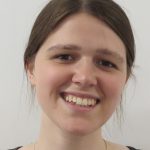
Intellectual disability is often associated with language delay, which commonly emerges early in life but is responsive to early intervention. There is much evidence to suggest that augmenting communication with manual signs, such as Makaton, can facilitate expressive language development in young children with intellectual disability. However, despite the evidential benefits and popular usage of sign-augmented communication within this group, there is currently limited research on the specific learning processes involved in its development.
Language development is an inherently social process. Head-mounted eye-tracking has been transformative in enabling us to capture the moment-by-moment gaze of children in their everyday interactions with their parents as their main social partners. Beyond understanding where children are looking during their everyday social interactions, there has been a clear recognition of the need to understand how motor activity contributes to social interaction. Children do not passively receive input from their environment, but actively generate it. For instance, holding or reaching for an object can bring it into the child’s line of vision, while simultaneously provide a salient cue to their parent as to where their attention lies. Research with typically developing children has used head-mounted eye-tracking during parent-child interaction to identify when and how attentional and motor patterns intersect to create ideal spoken-word learning moments, and this is currently being examined in children with neurodevelopmental disorders. However, the research has so far omitted sign-augmented language, despite its prevalent usage by children with intellectual disability.
My PhD project is therefore interested in the attentional and motor processes involved in the acquisition of sign-augmented language in young children with intellectual disability, using head-mounted eye-tracking during parent-child interaction. This research will specifically focus on children with Down syndrome, as the most common known genetic syndrome associated with intellectual disability. Through understanding more about how sign-augmented language develops moment-by moment, we hope to provide parents and practitioners with information on how to better support children’s language learning.

